Ferrum chimneys
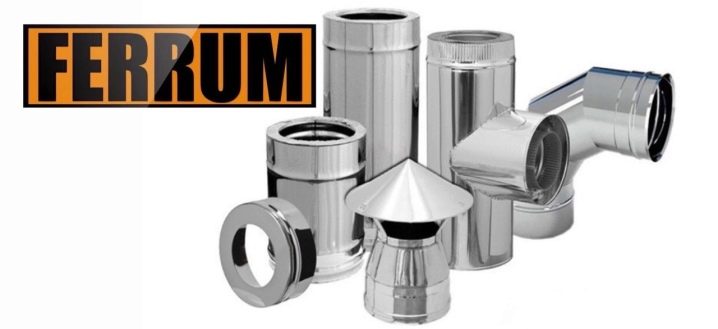
The chimney is a very important part of the heating system, to which strict requirements are imposed. It must be made of high-quality non-combustible materials and be completely sealed, prevent fuel combustion products from entering the house. In this article, we will tell you in detail about the types and main features of chimneys from the manufacturer Ferrum, about the nuances of correct installation and get acquainted with consumer reviews.

Peculiarities
Among the domestic brands engaged in the production of chimneys and related products, the Voronezh company Ferrum has established itself well. For 18 years now, this company has consistently held the bar as the leader in sales in Russia. Among the undoubted advantages of Ferrum products are high-quality advanced materials with a relatively budget price tag - similar European products cost 2 times more.
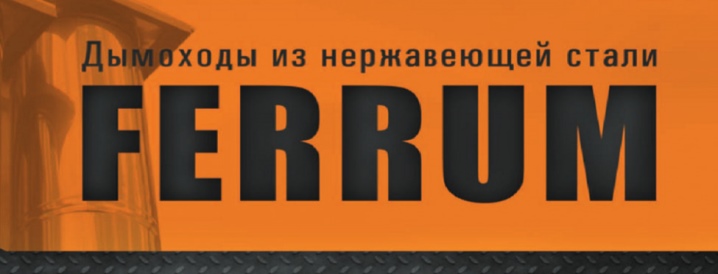
Ferrum manufactures 2 main product lines: Ferrum and Craft. The first one is prefabricated parts for economy-class chimneys, made of high-quality heat-resistant steel and stone wool with a strength of 120 to 145 kg / m 3. This is the best option for private construction. The second line is designed with the use of innovative technologies specifically for use in industrial facilities where special resistance to harsh operating conditions is required.
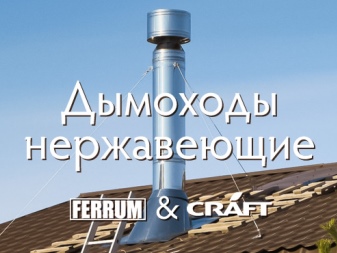
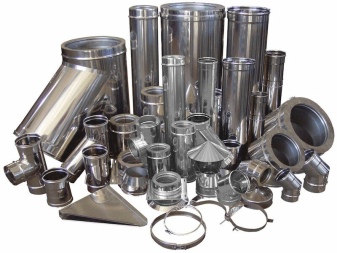
To ensure the most durable pipe seam, the manufacturer uses the cold forming method, which makes it possible to obtain a reliable and airtight product with smooth inner walls, on which combustion waste does not stick. In addition, Ferrum uses several types of metal welding at once:
- laser;
- overlapping welding;
- welding in the lock;
- argon arc TIG welding.


This is due to different requirements for the mechanical properties of the seams and allows you to reduce the cost of the final product without compromising its quality. And the availability of individual fixing systems makes Ferrum chimneys even more reliable. The pipes heat up quickly and can withstand temperatures up to 850 °.
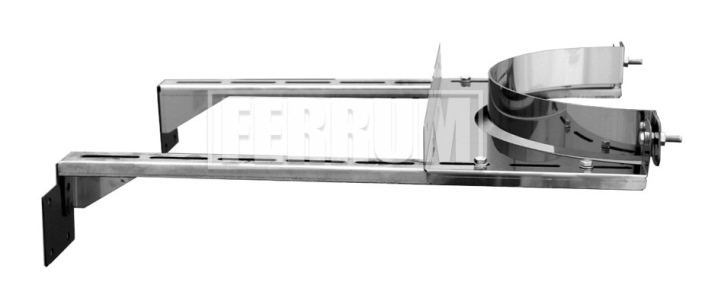
But one should not forget about safety precautions, because it is she who is the key to the long and successful operation of the chimney. So, it is strongly discouraged:
- light a fire with liquid fuel;
- burn out soot with fire;
- put out the fire in the stove with water;
- break the tightness of the structure.

Subject to these simple rules, the chimney will regularly serve you for many decades.
The lineup
The Ferrum lineup is represented by 2 types of chimneys.
Single-walled
This is the most budgetary type of chimney design used for the installation of gas and solid fuel boilers, fireplaces and sauna stoves. Single-walled pipes are made of ferritic stainless steel and mounted either inside an already finished brick chimney, or along the outside of the house. For outdoor installation, it is best to additionally insulate the pipe.
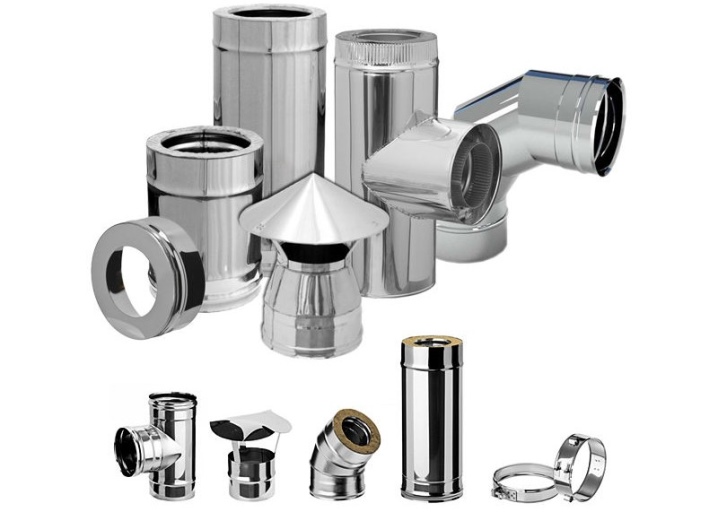
Double-walled
Such structures consist of 2 pipes and a layer of stone wool insulation between them. This significantly increases the durability of the chimney due to the protection against condensation and ensures proper operation under adverse conditions.
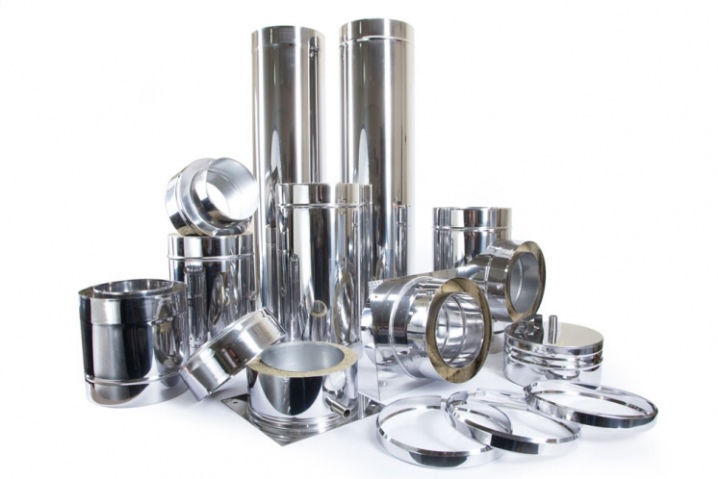
To ensure fire safety, the ends of the double-walled pipes are filled with heat-resistant ceramic fiber, and for better sealing, silicone rings are used.
Sandwich pipes are used in the installation of absolutely all heating systems, including house and bath stoves, fireplaces, gas boilers and diesel generators. The type of fuel is also not important. In addition to pipes, the Ferrum assortment includes all other elements necessary for assembling a chimney:
- condensate drains;
- boiler adapters;
- gates;
- consoles;
- chimneys-convectors;
- revisions;
- stubs;
- assembly sites;
- fasteners (clamps, supports, brackets, corners).
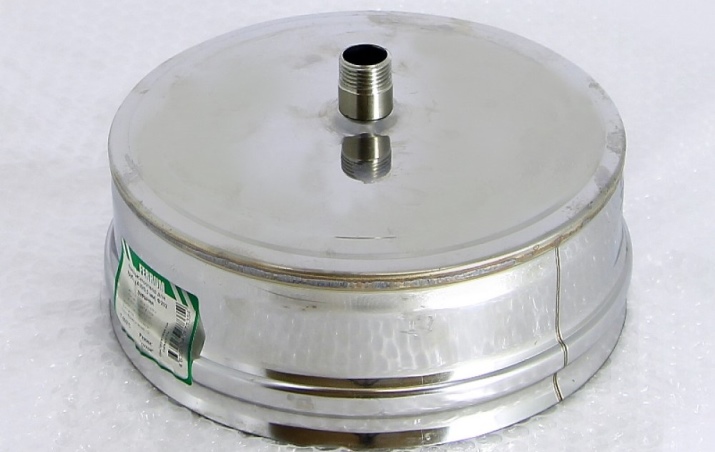
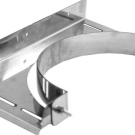
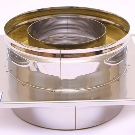
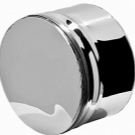
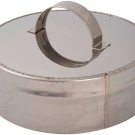
Element sizes range from 80 to 300 mm in the Ferrum range and up to 1200 mm in Craft. The modular system allows you to create almost any configuration of chimneys, which is an invaluable advantage for houses with a non-standard design.
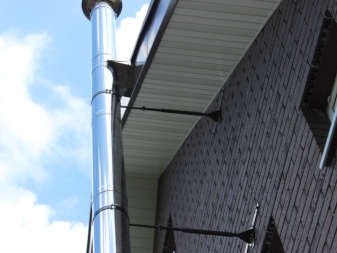

In addition, the catalog of goods includes water tanks (hinged for a stove, for a heat exchanger, remote, tanks on a pipe), ceiling-through devices designed for installation of a structure through the ceiling and walls, thermal protective plates and refractory fiber, as well as interior chimneys covered with heat-resistant (up to 200 °) matt black enamel. However, the buyer can choose any other color by ordering to paint the chimney in the color of the roof. The palette of shades includes 10 positions.
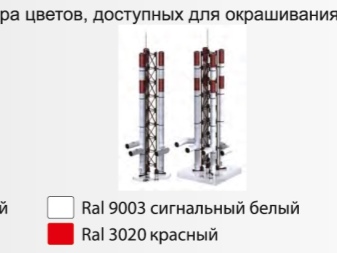

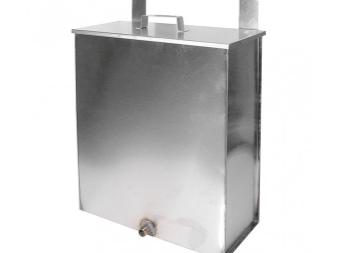

Subtleties of installation
To assemble and install a chimney, you need a passport - technical documentation for this object, containing a diagram and detailed assembly instructions. The chimney must be installed strictly vertically to ensure sufficient draft. If this is not possible, then the SNIP allows small inclined sections at an angle of no more than 30 °.
- We start the installation from the side of the heater. First of all, we install the adapter and the section to the main riser.
- We mount the console and the mounting platform as a support for the structure. - they will take on all the main weight.
- At the bottom of the mounting platform we fix the plug, at the top - a tee with an inspection plug, thanks to which the condition of the chimney is checked and the ash is cleaned.
- Next, we collect the entire set of parts to the very head... We strengthen each connection with a thermo-sealant. After it is completely dry, you can check the chimney draft level.
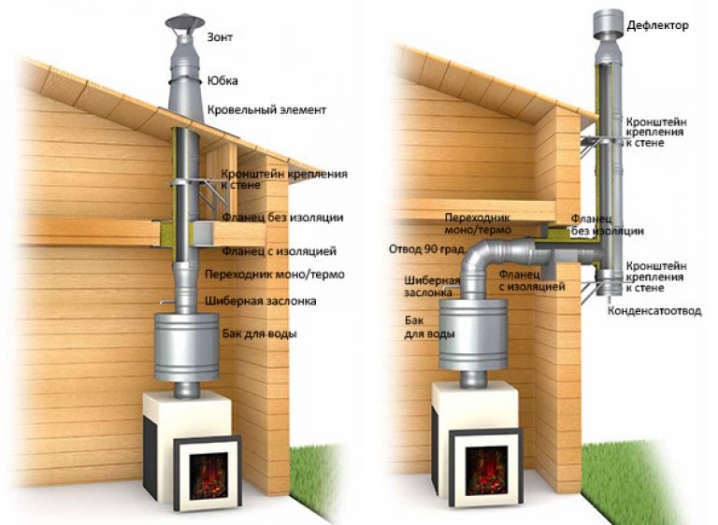
Remember that the ceiling-pass assembly must match the pipe diameter exactly. This is the only way to ensure sufficient insulation of the chimney from flammable roofing materials.
A sandwich-type chimney should ideally be straight, but if you cannot do without corners and turns, then it is better to make 2 45 ° instead of one 90 ° angle. This will provide greater structural strength.
Such a chimney can be brought out both through the roof and through the wall. In any case, the passage assembly must be carefully protected from fire. It also makes sense to install a spark arrester at the mouth of the chimney - accidental ignition of soot from a spark can cause a fire on the ceiling.

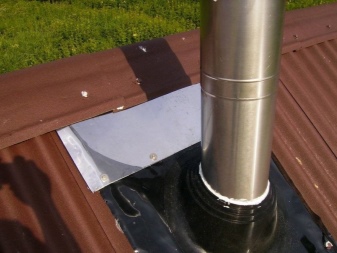
Single-wall chimneys are recommended to be installed exclusively inside a warm room and used in combination with brick flue ducts... The fact is that when hot metal comes into contact with cold air, condensation forms, which significantly reduces the efficiency of the entire heating system.
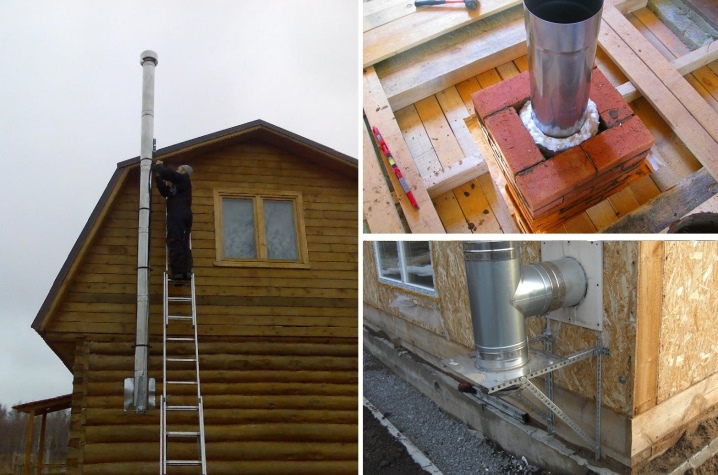
It is also common to use single-wall structures in one set with a water heating system for small rooms such as a dressing room or garage. Under such circumstances, a "water jacket" is installed on the boiler, to which the supply and return pipes are attached. There are important nuances in designing a chimney.
- Steel pipes can only be used if if the temperature of waste gases is not more than 400 °.
- The height of the entire chimney structure must be at least 5 m. Ideally, a length of 6–7 m is recommended for good traction.
- If the chimney is installed on a flat roof, the height of the chimney should be at least 50 cm above the surface.
- When using single-layer pipes outside the building, the chimney must be provided with thermal insulation.
- If the chimney height is more than 6 m, it must additionally fixed with stretch marks.
- The distance between slabs and single-walled pipes must be 1 m (+ thermal insulation), for double-walled - 20 cm.
- The gap between the roof covering and the chimney must be from 15 cm.
- Safety technology allows no more than 3 bends along the entire length of the structure.
- Fastening points of structural parts in no case should be inside the house floors.
- The mouths must be protected from precipitation roof umbrellas and deflectors.

In addition to traditional types of chimneys, recently, coaxial type chimneys, consisting of 2 pipes embedded in each other, have become widespread. They do not touch inside, but are connected by a special jumper. The combustion products are discharged through the inner pipe, and air from the street is sucked into the boiler through the outer pipe. Coaxial flues are designed for devices with a closed combustion system: gas boilers, radiators, convectors.
Their length is much shorter than usual, and is about 2 m.
Due to the fact that the oxygen necessary for gas combustion comes from the street, and not from the room, in a building with such a chimney there is no stuffiness and an unpleasant smell of smoke from the stove. Also, heat loss is reduced, and complete combustion of gas in the boiler ensures the absence of emissions harmful to the environment. Considering the increased fire safety, coaxial chimneys often installed in wooden private houses... Of the disadvantages of such structures, it is possible to note the higher price and complexity of installation than that of traditional products.
The subtleties of installing such a chimney system depend on the individual characteristics of the heating apparatus and the configuration of a particular building. Usually, coaxial flues are mounted horizontally, leading the duct through the wall. According to the SNIP requirements, the length of this type of chimney should not exceed 3 m.

With the slightest lack of confidence in your abilities, you should entrust the installation of the chimney to professionals. In addition to the sale of equipment and components, Ferrum also provides services for the installation of chimneys, stoves and fireplaces.
Review overview
User reviews of Ferrum products are overwhelmingly positive. The owners praise these structures for ease of installation, the ability to create various configurations, strength, functionality, aesthetic appearance and a reasonable price tag. Thanks to the wide range of products, it is not difficult for buyers to find the desired item in the store or order it online through the official website. Delivery of goods takes 2 weeks and is carried out by several courier services, depending on the wishes of the buyer. All products are supplied with a quality certificate and detailed assembly instructions.
Buyers also note the convenience of the chimney designer presented in the Ferrum online store, thanks to which you can quickly and easily design your chimney, based on the individual parameters of the house and the heater.
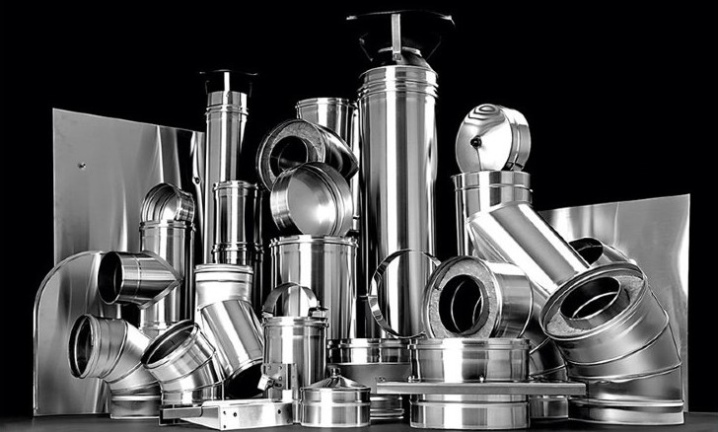













The comment was sent successfully.